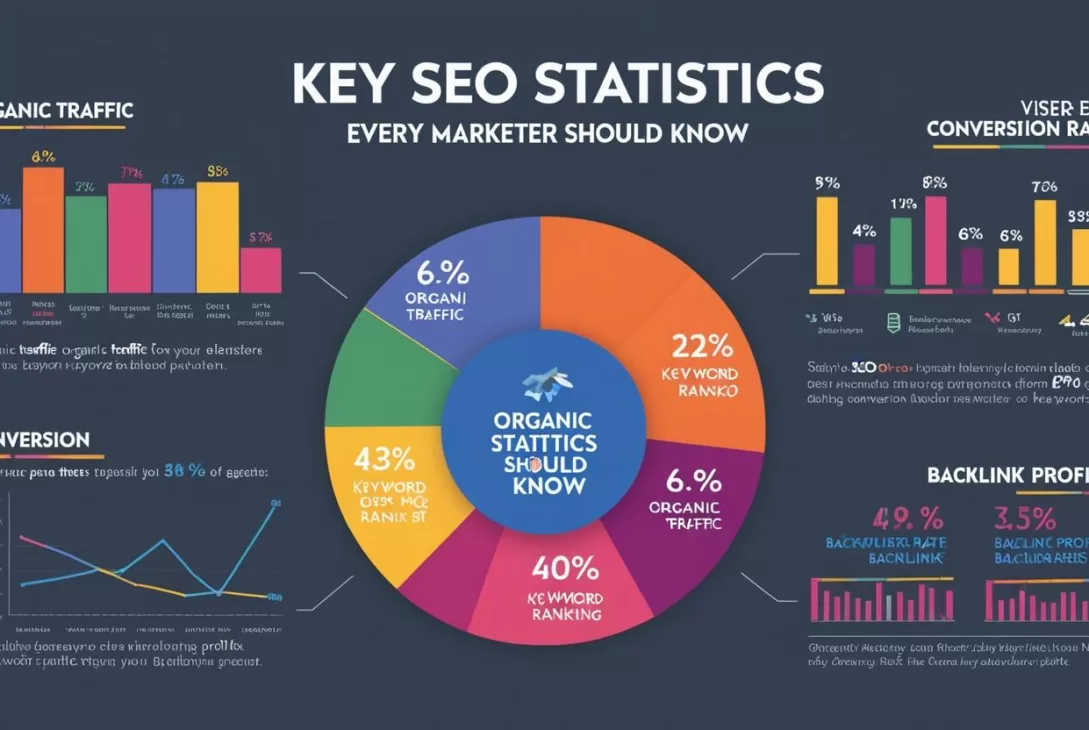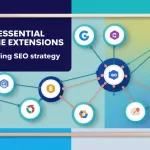If you’re diving into the world of digital marketing, there’s one thing you just can’t ignore—Search Engine Optimization (SEO). Why? Because it’s one of the most effective ways to get your website in front of the right audience without constantly shelling out for ads.
But SEO is always changing. What worked a few years ago won’t necessarily cut it today. That’s why staying updated with the latest SEO trends and statistics is so important.
So, whether you’re brand new to SEO or already have a strategy in place, these 12 up-to-date SEO statistics offer meaningful insights that can shape your approach and help you grow your traffic in 2025 and beyond.
Let’s break them down together.
1. Google still dominates the search world
This may not come as a surprise, but Google continues to maintain an iron grip on the search engine market.
Stat: Google holds over 91% of the global search engine market.
So, what does this mean for you? It means your SEO strategy needs to be laser-focused on what works best for Google. Understanding how Google ranks content—from crawlability to keyword intent to user experience—is key if you want to drive traffic.
2. Most people never scroll past the first page
Let’s be honest—when was the last time you clicked “next page” on Google? Probably never.
Stat: 75% of users never scroll past the first page of search results.
If your site isn’t appearing on page one, you’re basically invisible. This highlights how critical it is to target the right keywords, create high-quality content, and optimize your on-page SEO.
3. Clicks go to the top
Getting on the first page is great, but the real gold lies in grabbing those top spots.
Stat: The first three positions in Google’s results get over 54% of all clicks.
Here’s a metaphor: Think of Google’s page one as a pie. Being in the top positions means you’re getting the biggest slices. Everyone else is just nibbling at crumbs.
4. People search with intent
Search engines aren’t just for answering random trivia questions—they often drive purchases.
Stat: 60% of users perform a search before making a buying decision.
That’s why mixing in commercial or transactional keywords into your content (like “best laptop for students” or “buy running shoes online”) can really boost your ROI.
5. Updating old blog posts can improve your rankings
Here’s something simple but powerful—you don’t always need new content. Sometimes, refreshing what you already have can offer serious returns.
Stat: Companies that update old blog posts experience an over 100% increase in traffic.
If you have older posts collecting digital dust, it might be time to give them new life by updating stats, improving readability, and optimizing for relevant keywords.
6. Mobile matters more than ever
Everyone’s glued to their phones these days—and search behavior proves it.
Stat: Over 60% of all Google searches come from mobile devices.
If your website isn’t mobile-friendly, you’re turning away more than half your potential visitors. That means fast load times, responsive design, and mobile-optimized content are no longer optional—they’re essential.
7. Voice search is growing fast
“Hey Siri, where’s the best pizza near me?”
Voice search is becoming a big part of how people interact with search engines.
Stat: 58% of consumers use voice search to find local business information.
To optimize for voice, try using more natural, conversational keywords in your content—think about how people actually speak when asking questions out loud.
8. Local SEO drives foot traffic and conversions
If you’re a local business, SEO can do more than just get your name online—it can bring customers through your door.
Stat: 78% of local mobile searches result in an offline purchase.
Make sure your Google Business Profile is updated, and include your location and services clearly on your website.
9. The power of featured snippets
Ever notice that box at the top of search results answering your question before you even click? That’s a featured snippet—and it’s prime real estate.
Stat: 19% of search queries trigger a featured snippet.
If you can land your content in that box, you’re getting seen before the top result. Use bullet points, numbered lists, and direct answers to snag this spot.
10. User experience impacts SEO
Google’s algorithms keep getting smarter. It’s not just about keywords anymore—it’s also about how users interact with your site.
Stat: A 1-second delay in page load can reduce conversions by up to 20%.
That’s massive. Make sure your site is fast, clean, and easy to navigate. Think of your website like a shop: if it’s messy, slow, or confusing, people won’t stick around, no matter how great your product is.
11. Long-form content tends to rank higher
Think longer content is boring? Think again.
Stat: Pages that rank on Google’s first page have an average of about 1,447 words.
Longer content gives you space to dive deeper into a topic, use more keywords naturally, and keep users engaged longer—a major win for SEO.
12. Backlinks still carry a lot of weight
You can write the perfect blog post, but if no one’s linking to it, Google might never notice.
Stat: The top-ranking pages on Google tend to have 3.8x more backlinks than pages ranked lower.
Building quality backlinks through guest posts, partnerships, or helpful tools can give your content the credibility it needs to rank higher.
Key Takeaways for Better SEO in 2025
The SEO world can feel complicated, but it really boils down to a few key points:
- Focus on quality content that truly helps your audience.
- Make your site mobile- and user-friendly.
- Use keywords naturally—especially long-tail and conversational ones.
- Improve page load speed and overall UX.
- Build backlinks to boost your credibility.
And don’t forget—SEO is a long game. You might not see results overnight, but the payoff is more leads, more clicks, and more customers without constantly paying for ads.
Final Thoughts
SEO might seem like a moving target—and in some ways, it is. But by keeping these stats (and the trends behind them) in mind, you’re better equipped to make smart decisions that can elevate your website and attract the audience you want.
Have you already experimented with some of these strategies? What worked—and what didn’t? I’d love to hear your thoughts!
In the meantime, get out there and start optimizing. The top of the search results is waiting for you.
Happy ranking! 🚀








